The Captain and Whitepointer face off in an outlandish, highly impractical, shootout that only The Captain would be prepared to publish. May the best cheat win.
Erick Hyland agreed to rebuild the Captain’s clapped out Haines Hunter 445F on one condition — that we feature our tub against his 5m Super Hornet. It’s the kind of deal Erick loves, one where he has total control over the outcome. Nevertheless, we agreed, largely because the scorecard is our domain and nothing gets published without The Captain’s say so. So Erick and his Whitepointer crew set about rebuilding the Nub Tub — while also conceiving and building a Whitepointer Super Hornet to compete with it.
Erick is qualified to offer a précis of both hulls. At Edencraft he built 445 hulls, before starting his own Whitepointer gig. He says his Super Hornet incarnation is, “a little longer, a little wider and a little deeper than the 445 — there’s a little bit more room in these — and you don’t have to wear life jackets.
But the 445 is still an iconic boat, there’s no two ways about it.” On our rebuilt tub he says, “we bought it up to the specs of a Whitepointer. It’s the toughest 445 ever built.”
Our battleground is Quarantine Bay in Eden on the NSW South Coast, not far away from where Erick used to build his Edencraft boats. The weather is blowing a snotty 25 knots sou’easterly and in these conditions, it’s best to stay in bed. Nevertheless, The Captain’s crew arrives early, shiny new 445 Nub Tub in tow.
COMPETITION TIME
A short while later, the competition arrives. It’s a basic white Whitepointer Super Hornet model with an aluminium console from Telwater, on top of which is a Humminbird sounder. Bolted on the back is an Evinrude E-TEC 115HP. WTF is Erick thinking? This is a bare-bones fit-out at best. The burly owner steps out of a lifted ’79 Series Toyota Land Cruiser and extends a stumpy hand to The Captain’s crew. “G’day boys, I’m Josh Doyle, Erick sent me.” We know Josh. He happens to be the son of Ron Doyle, the original father of Edencraft, also featured in this issue. Small world, eh? He’s a top bloke, but unfortunately for him, it looked like a win to The Captain was all but guaranteed in this shootout.
FACE MELTER
As we poke around Josh’s rig, sizing up the opposition, the shootout takes an unexpected twist when a fresh rig rolls down to the ramp — a face-melting ensemble of black metal and glass. It’s Erick behind the wheel of a 1500 Ram Laramie towing a powder-coated black Grove Marine trailer, on which sits a black 5m Super Hornet adorned with a black Mercury Verado 225HP V6. “What do you think of the new weaponized Whitepointer, fellas?” he asks, mirrored Aviators wrapped around his swelling head.
“We pushed everything to the limit on this baby — she’ll be good for 100km-plus!” Trav develops an instant nervous twitch as Jack reaches for the rulebook. Of course, there isn’t one — Erick is writing his own rulebook today.
THREE’S A CROWD
With the three steeds lined up side by side, we ask Erick for a description of each of the boats he built — or rebuilt, in the case of the 445. “Well, beneath the shiny exterior, all the rigs are a little different, starting with the transoms,” Erick says. “The Tub is two sheets of 19mm Thermo-Lite sandwiched together, Josh’s white Super Hornet features two sheets of 19mm marine ply, and the black beauty features our bulletproof solid glass transom with 38 layers of glass. We did that to accommodate the big black motor.”
The Mercury Verado 225 gives off a bass boat vibe. This new rig has captured everyone’s attention and the closer we get, the more bits we find bolted to it. It features a side console and two suspension pedestal seats at the rear — not a stand-behind console as featured on the other two models in our line-up. Advantage Nub Tub.
“It’s dripping all kinds of shit that even I don’t understand,” Erick says. “We gave it to Jayson Smith from All Power Marine in Bairnsdale — he normally does our big 263 Whitepointers, but this time he had to pack everything into a 5m open boat.” The side console shrouds a Simrad NSS16 evo3, matched to an SS175HW transducer. The Simrad is linked to the engine with a VesselView link kit (essentially, digital gauges) and it’s all NMEA 2000-connected. Next to the display, there’s a Simrad VHF with AIS capability. It’s basically the same set-up as the Tub, so no advantage to the Whitepointer here.
Unfortunately for The Captain, the stereo is a whitewash. It’s a JL Audio system featuring a MM100 head unit with V800 amplifier, sub-woofer, RGB controller and LED speakers. “This is the first boat in Australia to have this JL Audio system with LED speakers,” Erick chimes in. “Each speaker has five-core wire run back to the RGB controller and split to the V800 amplifier. You can hear this bloody thing from half a kilometre away.” Damn, seems Erick has done his homework. It dominates our JL Audio system with twin 6.5-inch speakers. Advantage Whitepointer.
“Everything is fed by four batteries that also feed a Minn Kota electric motor, with i-Pilot, Ocean LED underwater lights, under-gunwale LED lighting and deck wash — all operated by touch-panel switches,” boasts Erick. It’s a monumental fit-up for a small boat and we ask Erick how it went down. “It tested Jayson’s tools,” he says. “He burned through two hole saws and a few drill bits before he rang to ask what the hell it was made of. I told him he’d need diamond drill bits to bore through the transom — nothing else can do it. He also went through a few hundred metres of tinned wire.”
TIME TO RIDE
Twofold Bay is now whipping up white water. We poke out and head for the shelter of Fisheries beach in the lee of the sou’easterly. Everyone gets soaked, proving no 5m boat is immune to Mother Nature. After drying off, we hop aboard each other’s rigs for some real-world testing. Josh’s is the most balanced boat, quickest to plane, and more efficient through the water. The 115 two-stroke is punchier than the other motors out of the hole, helped by the minimalist fitout and low hull weight.
It also has plenty of legs at the top end, pushing the boat to more than 40 knots. But it wasn’t long before Josh has the cowling off, dealing with some kind of E-technical problem. The open plan around Josh’s console proves best for fishability in the sloppy stuff. It’s nice not having a casting deck, although this obviously comes into play for storing gear and elevated casting opportunities when they arise.
We can’t split the rides on the plane. Maybe the 445 has a finer entry, is a tad narrower and a tad smoother through the water, but we reckon Erick will contest that. “I’ve built all these boats, and in these conditions I couldn’t tell the bloody difference,” he says — obviously deflecting attention from the incredibly wet ’n’ wild ride in the back of the black beastie. We press him on the rearward seating position. “It looks sporty, but as an old ab diver, especially when you’re doing more than 100km/h, I’d rather stand up.” Advantage Nub Tub.
FITTIN’ THE FLOORING
Deck Armour dynamo Shane Paton describes the Super Hornet fit-up The brief from Erick Hyland was to do the best job we’ve ever done. This is where the fun happens, allowing us to have a bit of creative licence. The amount of design that’s gone into this Super Hornet is normally reserved for an 8m boat. We’ve tried to create a lot of drama using a little bit of contrast and strong colours. In the pockets we’ve got a diamond-stitched upholstery look. We’ve got the branding “Whitepointer, Super Hornet and Weaponized”. We also designed the hornet character flexing its muscles, which is probably what this boat is all about — it’s a small boat with a lot of power.
This job took a day to measure up. That involved templating with Pattern Pro upholstery material — which can’t be stretched or torn. The templates are then sent off to Deck Armour HQ in Redland Bay, Queensland, where they’re CNC (computer numerical control) cut, then sent back to me for the fit-up. That usually takes about a day. All-up, there’s more than a dozen separate pieces that make up this artistic mosaic.
FIVE REASONS WE LOVE DECK ARMOUR
01 Non-slip resistance means safety and confidence
02 Closed-cell foam with compression offers comfort
03 Sound-deadening qualities soak up ambient noise
04 Never gets too hot and is built to handle UV
05 Aggressive glue won’t let go under pressure
WEIGHT EXPECTATIONS
We can’t verify the top speed, but Erick assures us it’s 117km/h. Is that top-end towelling worth the weight of the 225? We say nope. At rest, the black Super Hornet sat way too low with the motor nudging 220kg. Add in the two pedestal seats sitting aft and it’s too much weight for a little rig, the water sloshing around our ankles at the stern. On take-off, it stands up like a honeymooner’s dick then becomes shit-scary at the upper end. It’s proof that epic fit-ups don’t always mean epic performance.
But as a show-stopper, Erick has created an impressive monster. It’s the kind of thing Darth Vader would roll up to a bass fishing competition in.
VALUE PROPOSITION
At a freckle under $50,000, Josh’s thrifty package easily wins the value category. It’s well under half the value of the black Super Hornet, with far more upside, too. The 445 is no budget-buster, either. When we tell Erick the replacement value is $80,000, he nearly falls off his pillion seat. “Back when they were first built in 1979, they were worth $2300 — so it looks like we’ve tipped about $75,000 worth of work into that thing,” he says smugly. “I could have built you guys a new boat for all the time and effort that went into that 445. Although, that said, it’s probably the best built and most attractive 445 going around, no two ways about it.”
WRAP-UP
In terms of sex appeal, the weaponized version will crack more necks at the ramp — and probably the neck of its operator, too. But that heavy arse configuration and set-back driving position is a bit of a hot mess that does nothing for ride or fishability. Erick did recover some ground with an epic digital fitout by All Power Marine. As Erick says, “I guess we know what the Super Hornet is capable of — but don’t worry, none of the punters will get a build plate that’ll allow them to run a 225 on the back of it.”
Agreed. In the end, it is a victory for common sense, with Josh’s boat topping the tables in all the practical categories such as handling, value and configuration. We reckon the 445 has better lines and is a neater overall size, sitting on a single-axle trailer and capable of fitting in most small garages. But given two good options, we’ll take both. We put the call out to Erick. “Whip us up a 5m Super Hornet, would you? Just hold the side console, pedestal seats and V6 Mercury.” “Coming right up,” he replies.

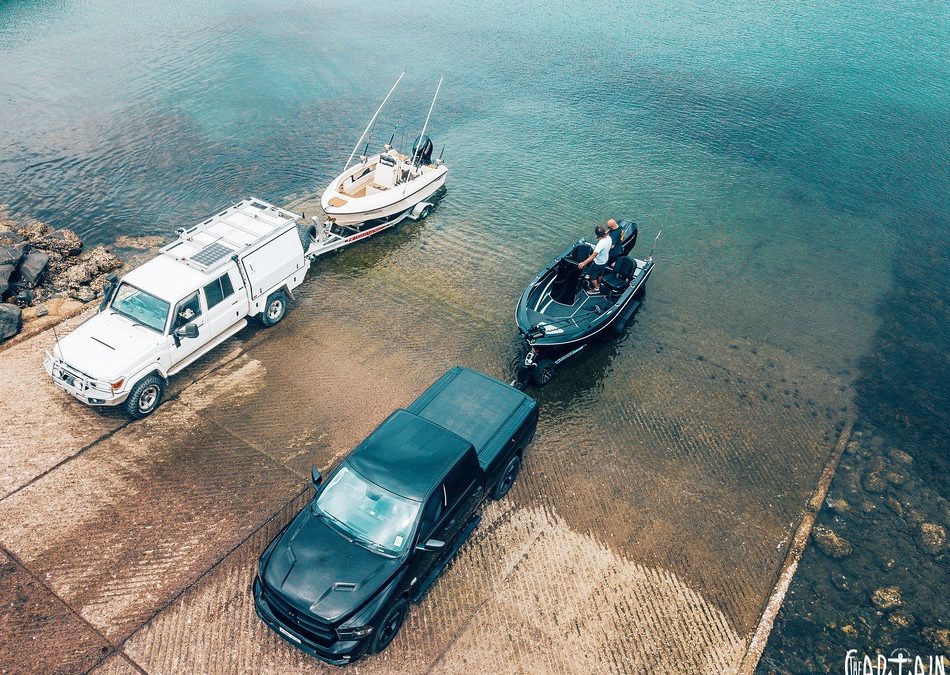

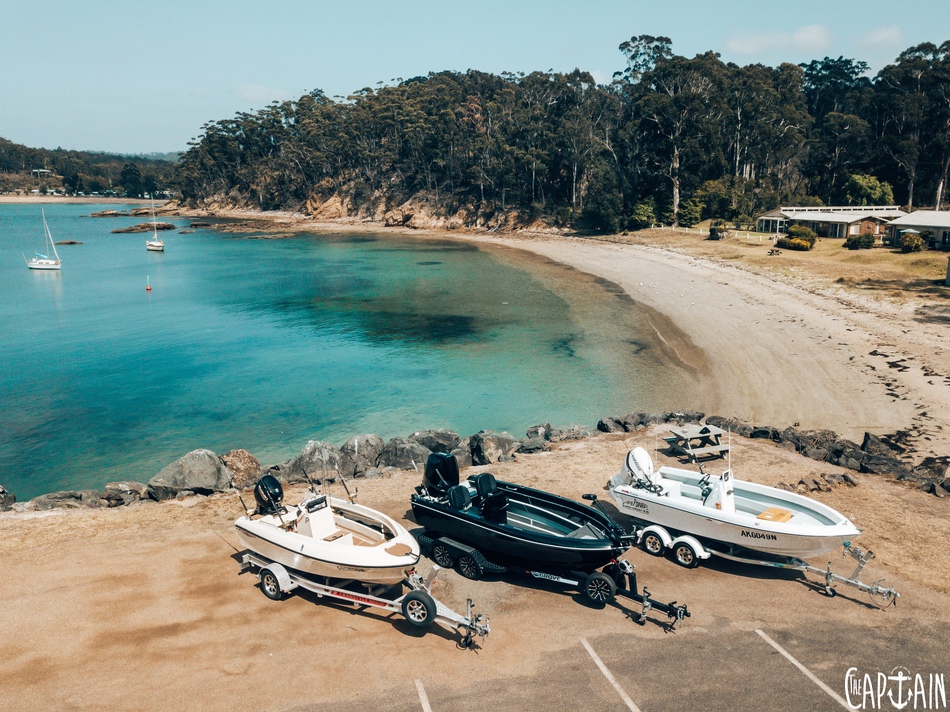

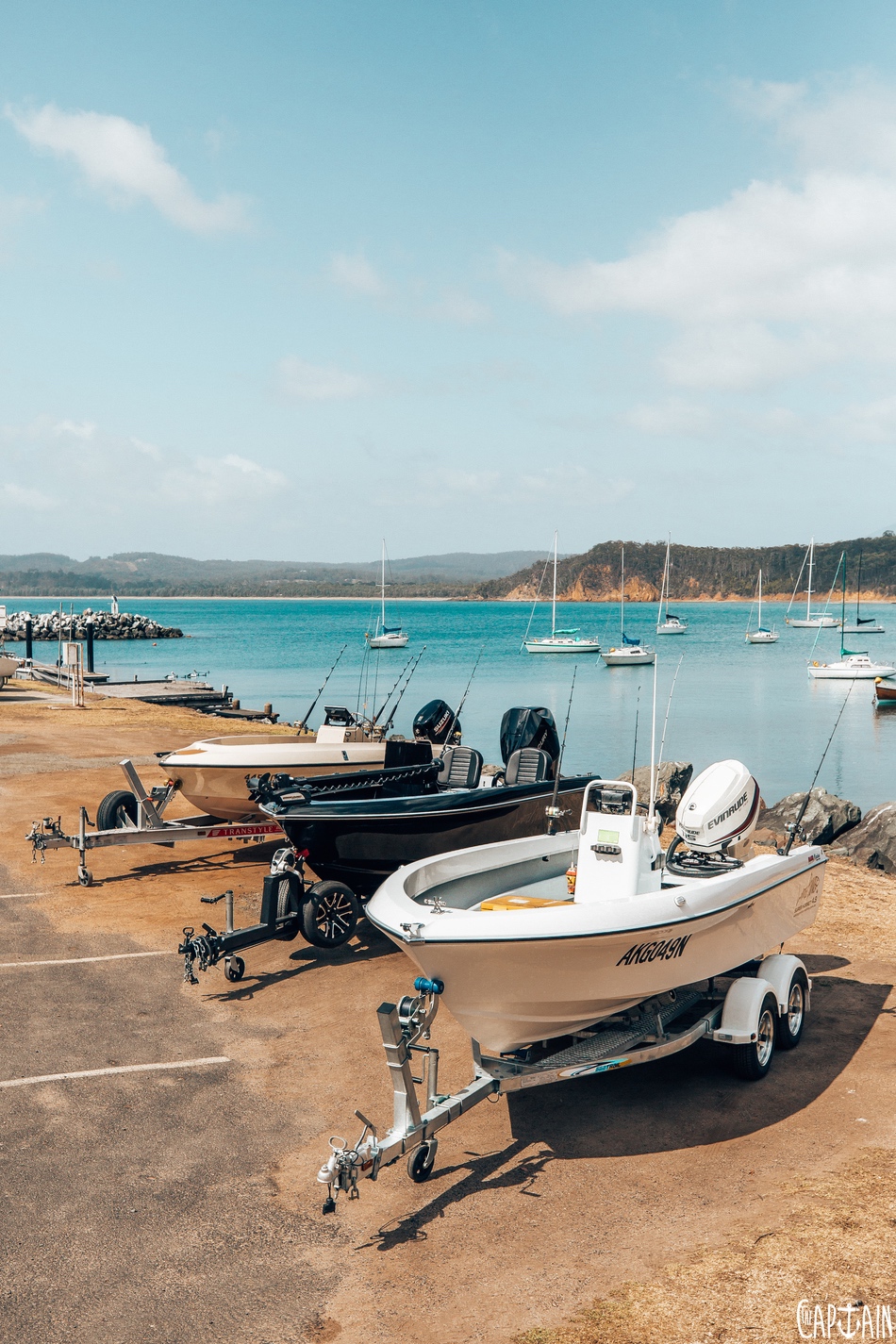



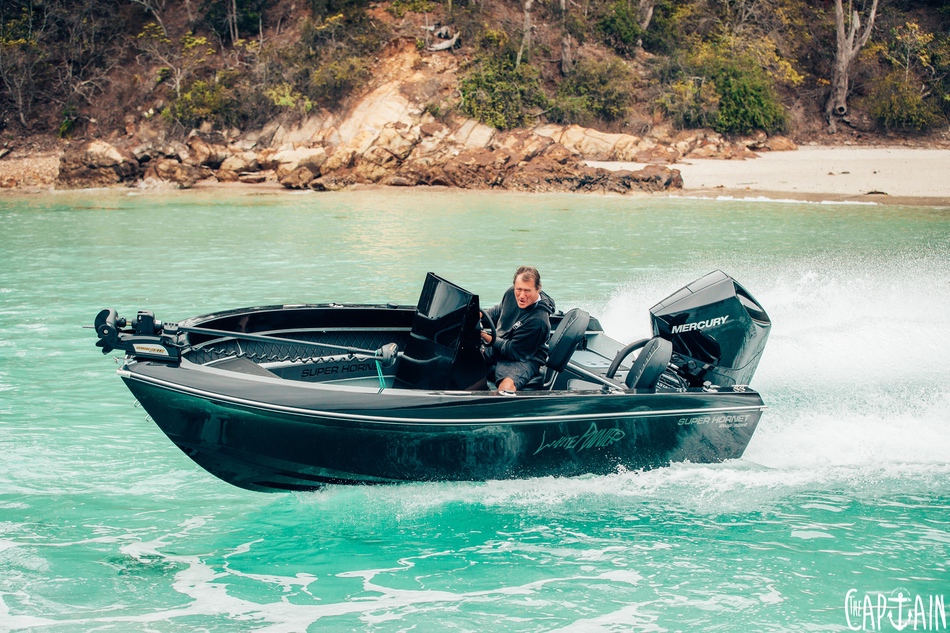

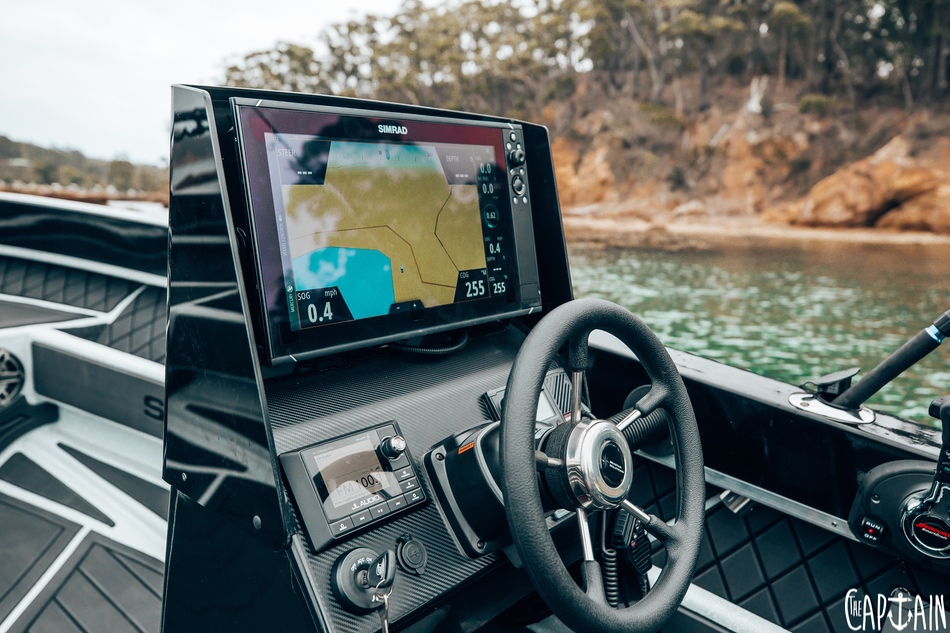
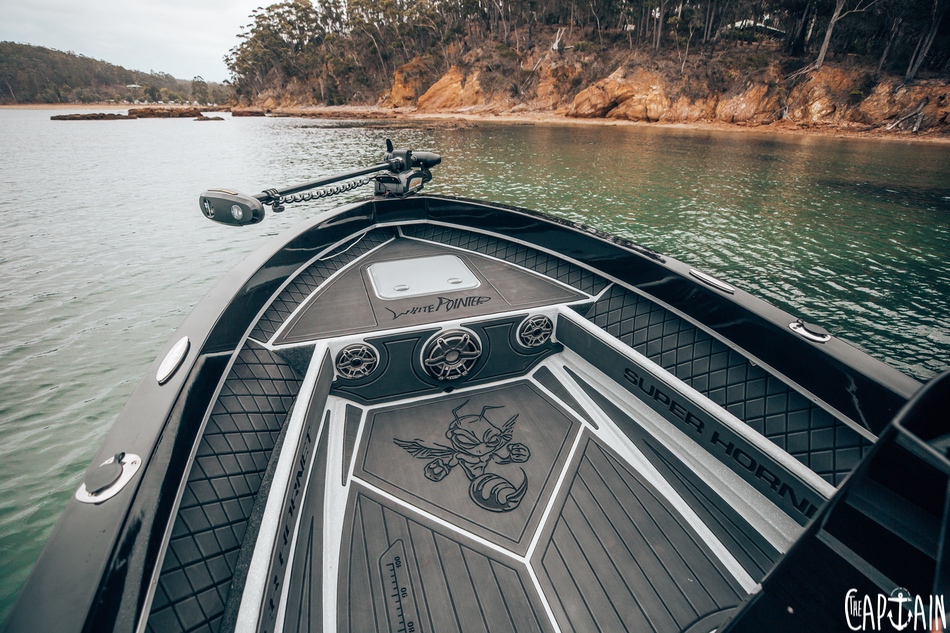
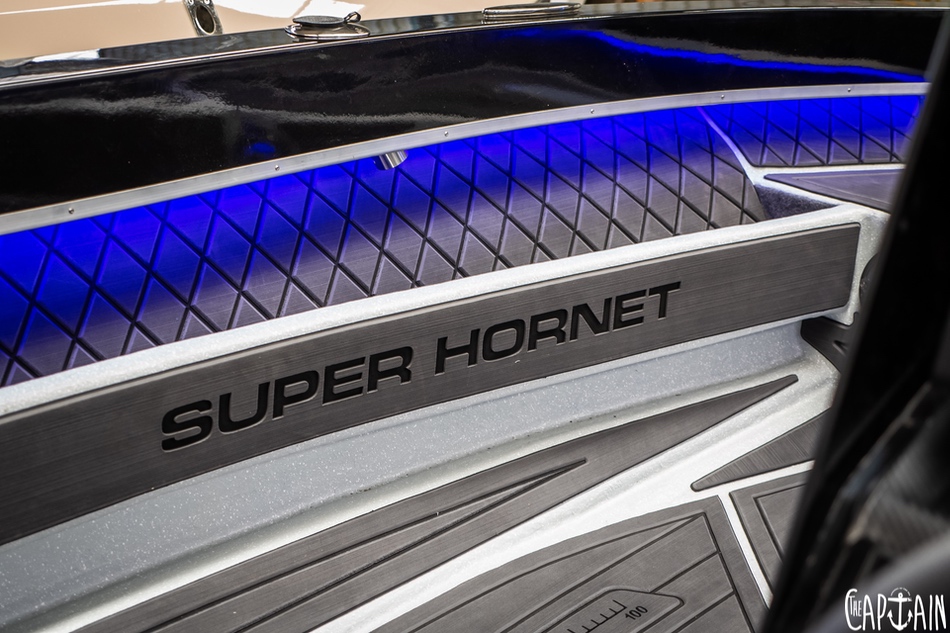



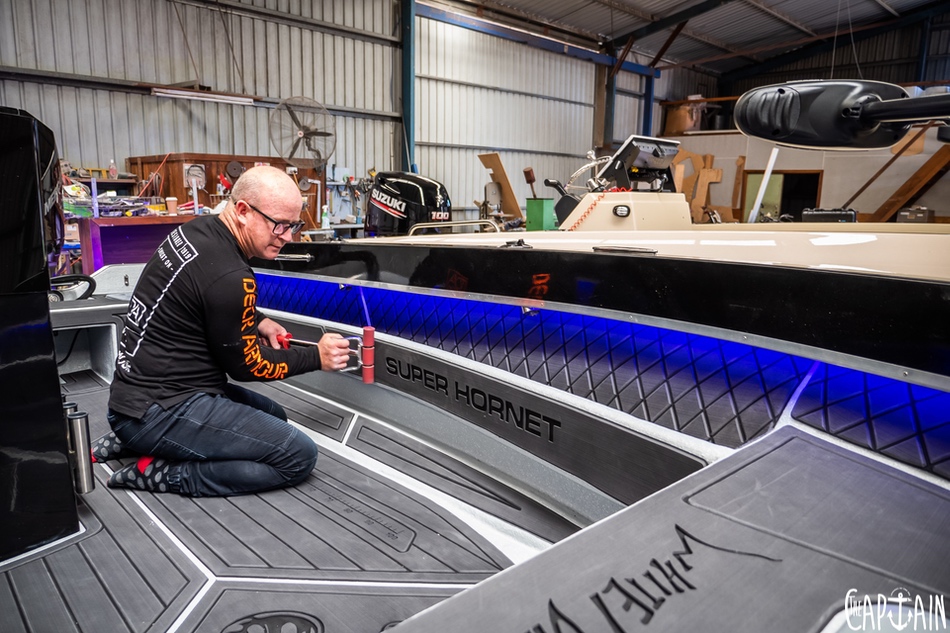




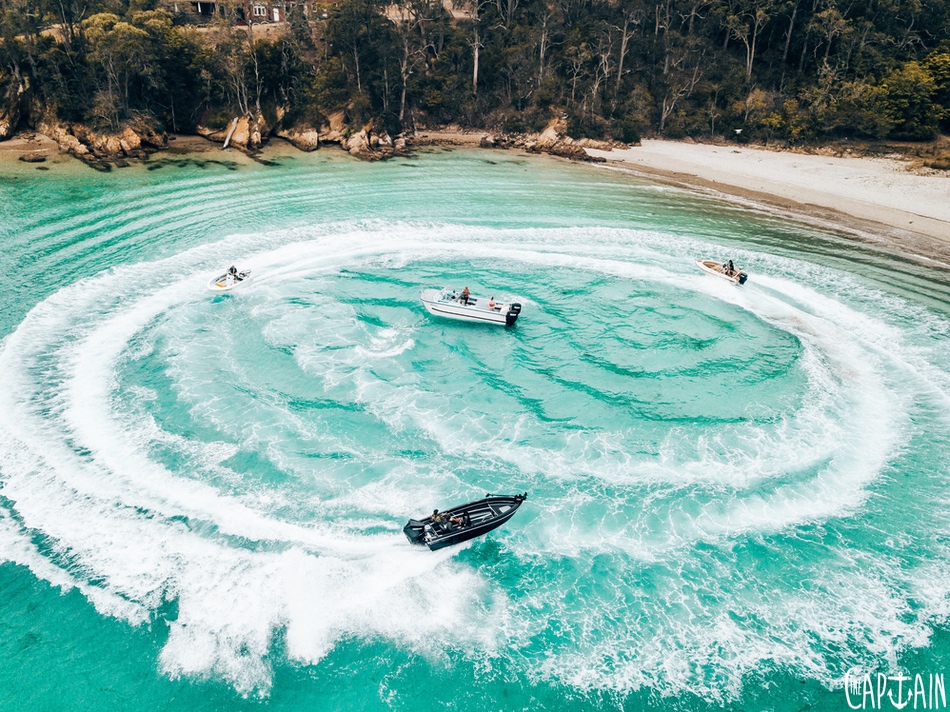
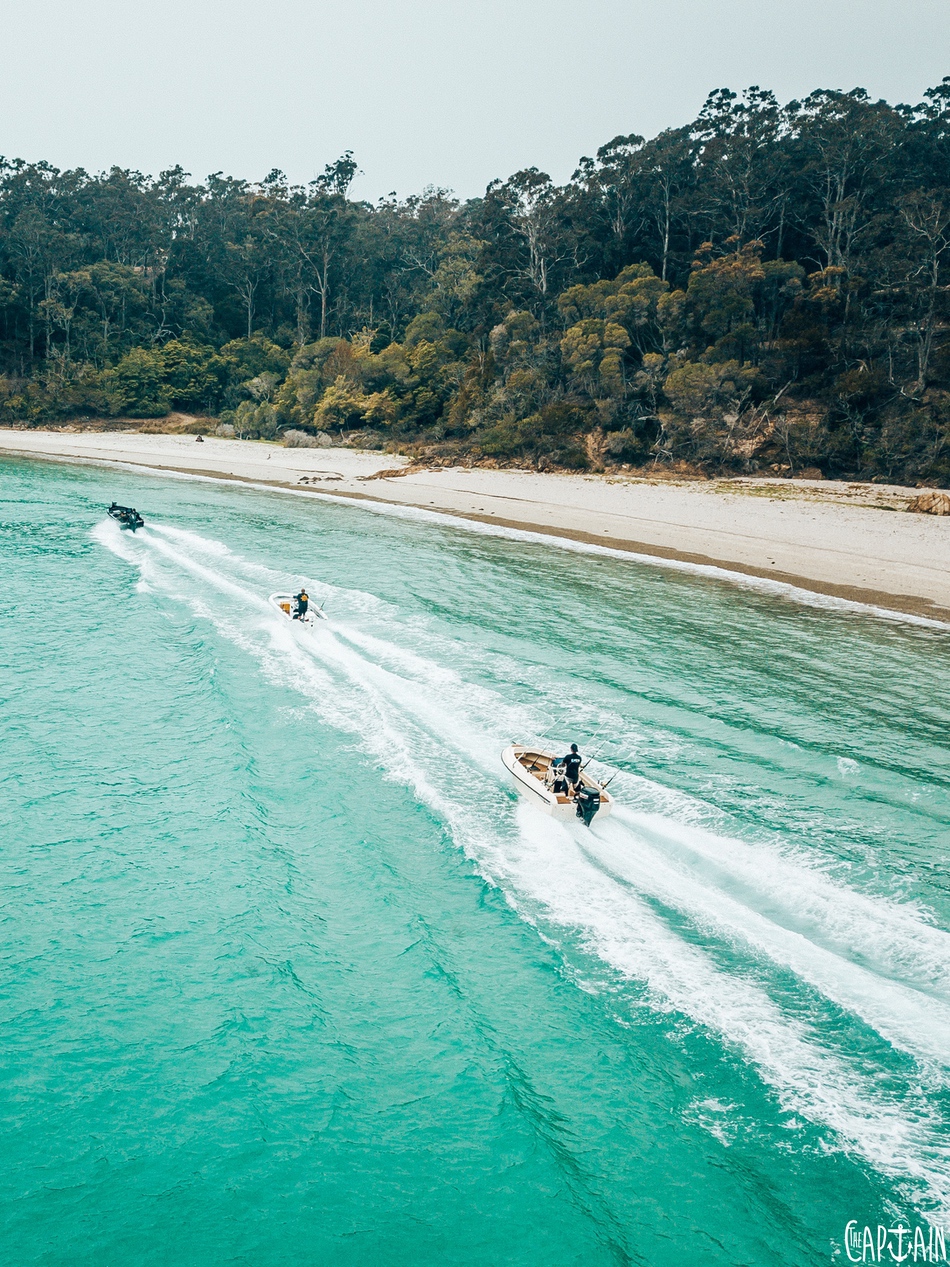
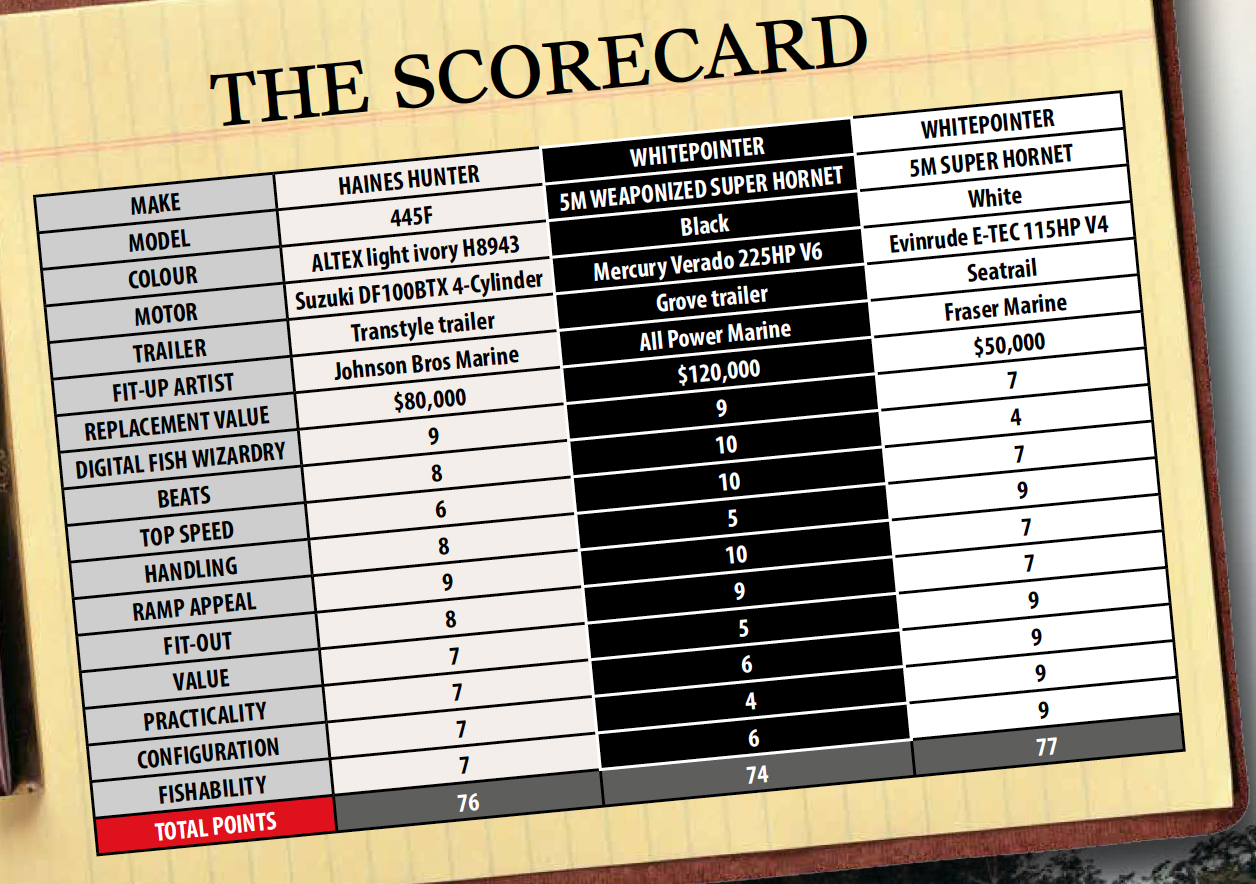
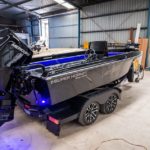
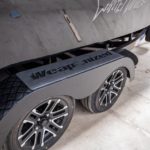
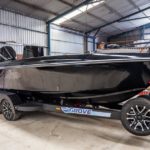
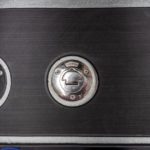
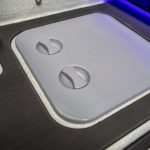
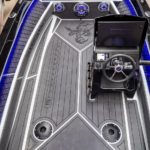

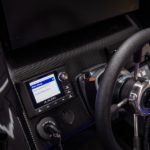
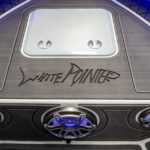

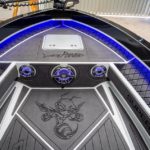
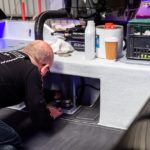
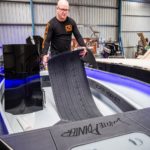
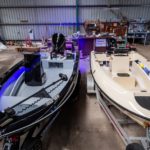
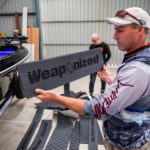
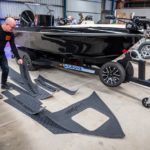
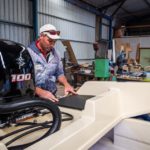
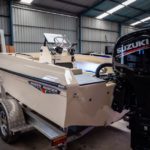
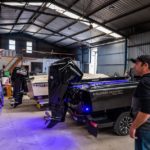
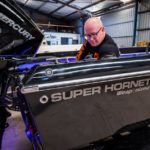
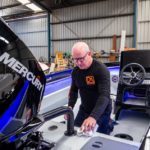
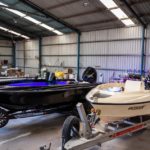
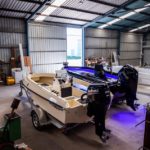
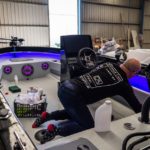
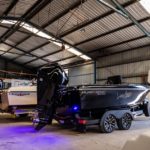
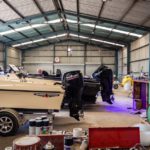
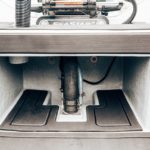
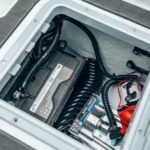
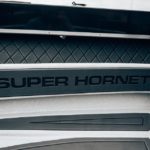
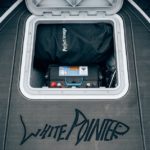
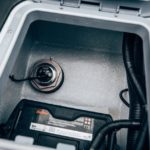

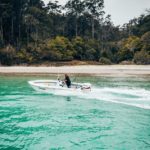
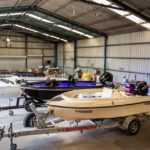
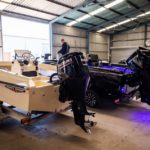
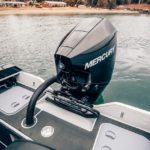
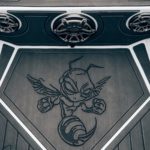
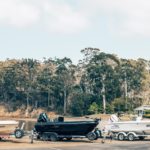
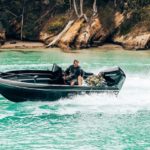
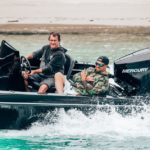
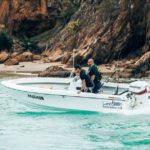
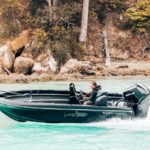
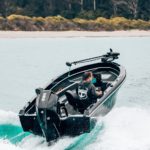
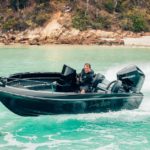
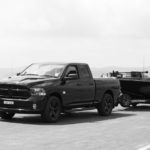
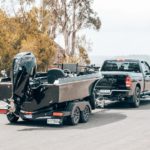
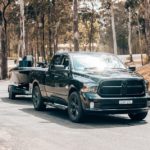
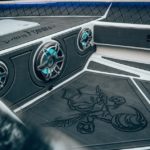
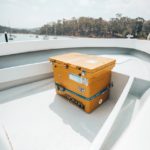
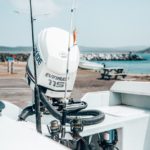
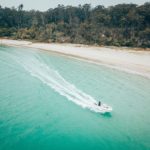
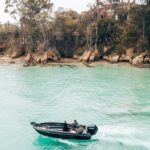
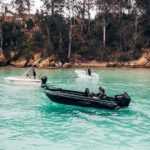
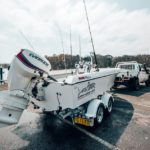

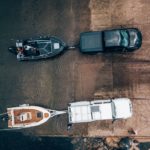
Recent Comments